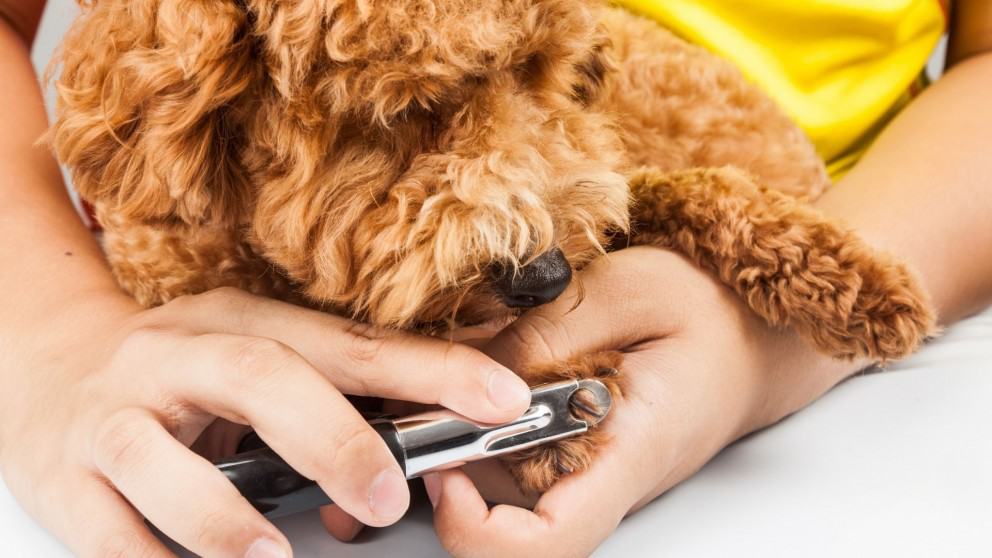5 Tips on How to Successfully Clip Your Dog or Cat’s Nails

Nail trimming is an essential step for grooming your pet. In fact, many vets will check your pet’s nails as a sign of health and hygiene. While professional groomers can take care of this routine procedure, many pet owners opt to save some coin by clipping cat or dog nails at home. Plus, this activity can be simple and hassle-free, especially if performed correctly. So if you’re looking to save some time and money, here are 5 tips on how to clip your pets’ nails from the comfort of your own house.
1. Create a calming set-up for your pet
Before clipping your pet’s nails, make sure they are properly relaxed. Be patient; if your pet is particularly anxious one day, consider grooming them another day. Make sure your cat or dog has all their immediate needs taken care of: give them plenty of food, and engage in extra play-time to make sure they burn off their excess energy. Clip their nails in a quiet location, away from windows, other pets, or other distractions. Grooming could be an unpleasant experience for your pet, so you want to make sure they are maximally relaxed before the manicure begins.
2. Train your pet to accept paw-touching
If you have a puppy or kitten, try to touch and hold their paws every day, so they are less sensitive to having their feet handled. Minimic the nail-trimming sensation by holding one paw between your fingers and rubbing gently for a couple of seconds. For cats, you can gently squeeze each paw to extend your cat’s nails. If your pet pulls their paw away, try to follow their movement gently without pinching or pulling back; you don’t want your pet to learn that if they pull away, you will let go. Work patiently, one paw at a time, and give your pet a treat afterwards. You can choose to do this a couple of times each day, or until your pet becomes accustomed to the sensation. The earlier you expose your pet to the sensation of nail trimming, the more likely they are to behave during the eventual manicure.
3. Let your pet investigate the clipper
If your pet has never seen nail clippers before, they may get frightened when you first pull out this unfamiliar object. In the days leading up to the manicure, leave your cutting tools out in a visible area. Encourage your pet to investigate them. Some pet owners will even leave a treat on top of the clippers to attract their cat or dog. Once your pet becomes familiar with the clippers themselves, see if you can touch the clippers to their paws. Squeeze the clipper (but don’t clip the actual nail) so your pet becomes familiar with the sound of nail-trimming.

4. Do research on the proper clipping tools and techniques for your pet
You may need special clippers or additional equipment, depending on your pet’s breed. Some owners prefer using a grinder tool over clippers, for example, because nail grinders can be easier to use if you have unsteady hands. Consider purchasing some styptic powder, or other clotting powder, to stop bleeding in case you accidentally cut a nail too short. After purchasing your tools, read articles or watch videos on the best nail-cutting techniques. If this is your first time giving a pet manicure, you may want to reach out to your vet or a pet store owner for a live, hands-on lesson.
5. Reward your pet afterwards
The nail-cutting process can make your pet nervous or fearful. Give your pet plenty of praise and comfort while cutting their nails, and take as many breaks as you need. (Some pets will complain after you’ve clipped two or three nails, so you may need several short sessions to complete the trim.) After trimming, always reward your cat or dog with a treat. This will ensure that your pet has an overall positive experience. If you are still struggling with clipping your pet’s nails, there’s no shame in bringing them to a professional. So approach the nail-trimming process with love and patience, and remember: the goal of this activity is not perfection, but maintaining the health and happiness of your furry friend!
How often should you be taking your pet to the vet? Read more here.
